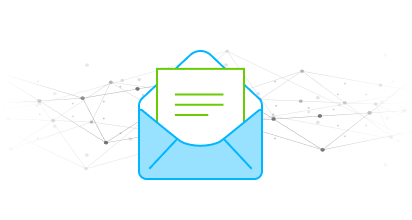
What if an AI could find patterns within existing data, understand text, perform sentiment analysis, answer questions in real-time, summarize reports and generate new text? All while helping your employees work smarter, gain efficiency, and improve your business workflows. Natural language processing (NLP) is a branch of artificial intelligence that combines linguistics and machine learning to enable computers to perform these kinds of NLP tasks.
Businesses are using NLP to automate tasks such as processing customer intent with sentiment analysis, performing translation, and analyzing text. Since computers can process enormous amounts of data at once, they can often perform these tasks better than humans. Businesses can gain crucial insight from unstructured data, which facilitates communication and improves overall business performance. Let’s explore some of these common tasks and their use cases.
Common NLP tasks in business
Sentiment Analysis
Sentiment Analysis is an NLP technique used to interpret the emotions in unstructured data and classify or score the sentiment. Example use cases for sentiment analysis might include:
- Tracking mentions on social media and handling hostile comments before they go viral
- Examining customer reactions to a product offering and adjusting future features
- Understanding how consumers feel about a brand and improving marketing strategy
Businesses are keen to gain understanding while saving time and resources. Sentiment analysis can uncover valuable insights from the text in customer support tickets, product reviews, emails, and more.
Machine translation
Translation is sometimes needed as the first step in an NLP workflow. Adding machine translation to the workflow greatly increases the time to AI deployment since machines can do this task so fast. Machine translation is also speeding up the time it takes for global companies to interact. The days requiring human validation for translation of foreign language documents are gone. Machine translation gives internal teams more time, energy, and budget to focus on critical areas.
Chatbots and virtual assistants
NLP has dramatically changed the landscape of business communication with customers, with 80% of consumers interacting with a chatbot or virtual assistant at some point. Businesses are deploying chatbots to drive sales, cut costs, offer round-the-clock customer service, and improve the overall consumer experience. Chatbots can help businesses engage clients by answering FAQs and delivering context to conversations.
Text analysis and information extraction
Text analysis, also known as text mining, is a process in which a computer analyzes large volumes of textual data to derive insights. It helps identify facts, trends, patterns, concepts, keywords, and other valuable elements in text data. Most businesses have the opportunity to collect large volumes of text data, including customer feedback, articles, emails, product reviews, and social media posts. Applying NLP to this data will help businesses make the most of it. Analyzing vast amounts of data isn’t something the human brain can tackle. Even if a group of people tries to pull off this task, the insights extracted might become obsolete by the time they succeed. Artificial intelligence is very useful for dealing with tasks dealing with enormous amounts of data.
Text generation
Next word prediction is the task of predicting the next word in a sentence. It is one of the fundamental tasks of NLP and has many applications. Without even realizing it, you might be using it daily when you write texts, emails, or while using a word processor. Traditionally, the tool improves its suggestions to predict what you are planning to type based on your previous inputs over time. However, with modern NLP techniques utilizing large language models, the predictions are based on pre-training from vast amounts of text.
Large language models do it better
Natural language processing has been around for a long time and it has worked fairly well. There are limitations, however. One is that all of the above tasks require the use of a different algorithm. This complicates the process of developing AI applications and workflows. In recent years, large language models have shown excellent results as a single model that can perform all of these tasks. They are generally easier to use as well. Large language models do require monitoring and the standard MLOps procedures, but the Mantium platform helps manage those details.
Use large language models to build AI with Mantium!
Natural language processing is a powerful tool that has the potential to change the way enterprises operate. The Mantium platform can help you build complex workflows with large language models. Get in touch and we’ll show you how Mantium can improve processes at your company!
Subscribe to the Mantium Blog
SubscribeMost recent posts

Enjoy what you're reading?
Subscribe to our blog to keep up on the latest news, releases, thought leadership, and more.



